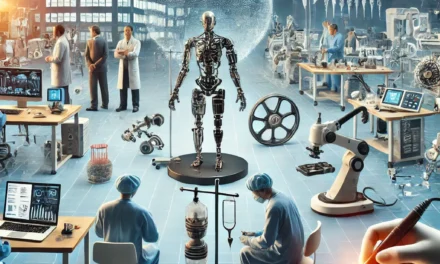
Is there a significant reliance on imports for critical components in medical device industry?

Yes, the Indian medical device industry has a significant reliance on imports for critical components, particularly for high-tech and advanced medical devices. This reliance poses challenges for the domestic industry in terms of cost, supply chain stability, and self-reliance. Here’s an overview of the situation:
Key Areas of Import Dependency:
- High-Tech Components:
- Sensors and Microelectronics:
- Critical for diagnostic devices, imaging systems, and wearable health devices.
- Primarily imported from countries like the US, Germany, and China.
- Semiconductors:
- Used in advanced devices like pacemakers, ventilators, and robotic surgical systems.
- India lacks a robust semiconductor manufacturing base, leading to dependence on global suppliers.
- Sensors and Microelectronics:
- Precision Instruments and Materials:
- Optical Components:
- Essential for devices like microscopes, endoscopes, and imaging systems.
- Imported from Germany, Japan, and the US.
- High-Grade Metals and Polymers:
- Required for implants, stents, and surgical instruments.
- Sourced from countries with advanced material science capabilities.
- Optical Components:
- Imaging and Diagnostic Devices:
- CT and MRI Systems:
- Advanced imaging equipment is often imported due to the lack of local manufacturing capabilities for these high-tech devices.
- Ultrasound and X-ray Systems:
- While some components are produced locally, key parts like transducers and detectors are imported.
- CT and MRI Systems:
- Robotics and AI-Based Devices:
- Robotic Surgical Systems:
- Most surgical robots, such as the da Vinci system, are imported.
- Components for emerging domestic robotics solutions are also sourced globally.
- Robotic Surgical Systems:
- Medical Consumables:
- Advanced Catheters:
- High-precision catheters for cardiac and neurovascular procedures are often imported.
- Drug-Coated Materials:
- Used in drug-eluting stents and other combination products.
- Advanced Catheters:
Reasons for Import Dependency:
- Lack of Indigenous Manufacturing for High-Tech Components:
- India has limited expertise and infrastructure for manufacturing advanced components like semiconductors, sensors, and precision optics.
- Cost of R&D:
- Developing high-tech components domestically requires significant investment in research and development, which many Indian companies cannot afford.
- Quality and Standards:
- Imported components often meet stringent global standards (e.g., FDA, CE), making them preferable for high-value medical devices.
- Global Specialization:
- Certain countries specialize in manufacturing specific components or materials, making imports more practical and cost-effective.
Impact of Import Dependency:
- High Costs:
- Imported components increase the production costs of medical devices, impacting affordability for domestic markets.
- Supply Chain Vulnerability:
- Reliance on global suppliers makes the industry susceptible to supply chain disruptions due to geopolitical tensions, pandemics, or trade restrictions.
- Challenges in Self-Reliance:
- Dependence on imports limits India’s ability to develop a fully indigenous medical device ecosystem.
Steps Taken to Address Import Dependency:
- Government Initiatives:
- Production Linked Incentive (PLI) Scheme:
- Encourages domestic manufacturing of high-tech medical devices and their components.
- Medical Device Parks:
- Facilities like the Andhra Pradesh MedTech Zone (AMTZ) provide infrastructure and resources to reduce import dependency.
- Make in India:
- Promotes local manufacturing and innovation in the medical device sector.
- Production Linked Incentive (PLI) Scheme:
- Development of Indigenous Alternatives:
- Companies like Meril Life Sciences and Trivitron Healthcare are focusing on developing indigenous solutions for stents, implants, and diagnostic devices.
- Startups and collaborations with academic institutions are working on R&D for advanced technologies like robotics and AI-based systems.
- Global Collaborations:
- Partnerships with global manufacturers to transfer technology and set up local production units.
- Incentives for Component Manufacturing:
- Tax benefits and subsidies for manufacturers investing in high-tech component production domestically.
Challenges in Reducing Import Dependency:
- Time and Investment:
- Building a robust domestic ecosystem for high-tech components requires long-term investment and infrastructure development.
- Skill Gaps:
- Limited expertise in advanced manufacturing technologies like microelectronics and precision engineering.
- Global Competition:
- Competing with established global suppliers in terms of quality, cost, and reliability is challenging for Indian manufacturers.
While the Indian medical device industry has made strides in developing indigenous products, there remains a significant reliance on imports for critical components. Reducing this dependency requires continued investment in R&D, government support, and collaboration with global players. Over time, initiatives like the PLI Scheme and the development of medical device parks are expected to strengthen India’s domestic manufacturing capabilities, paving the way for a more self-reliant and competitive industry.




























